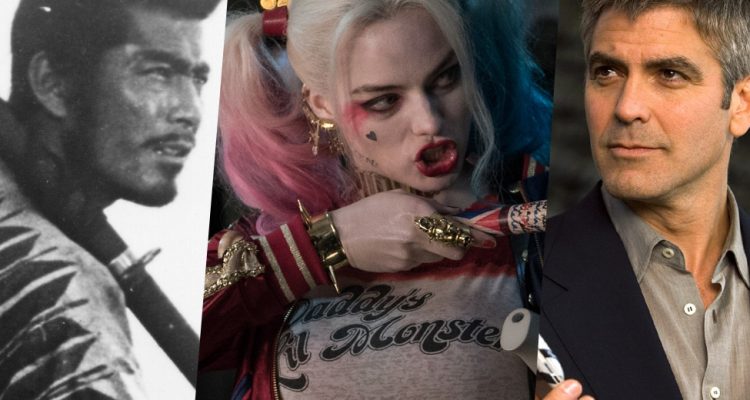
“The Usual Suspects” (1995)
Along with “Reservoir Dogs” one of the twin defining pillars of the 1990s “squad” movie, Bryan Singer‘s terrific “The Usual Suspects” does such great character work amid its ensemble that you can enjoy it repeatedly, even after you know the twist. The identity of Keyser Soze is really just the maguffin around which the plot twists and turns, as recounted by Verbal (Kevin Spacey, star of this week’s “Nine Lives,” how are the mighty fallen etc). Along with Fenster (a career defining Benicio Del Toro), McManus (Stephen Baldwin, during his brief tenure as a Baldwin), Keaton (Gabriel Byrne‘s best moment perhaps) and Hockney (Kevin Pollack, given one of the best last lines ever), Verbal carried out a complicated job for an unseen boss, which resulted in everyone else being killed. But it’s the alternating currents of suspicion and loyalty that flow between all clashing personalities of all gang members, and Chazz Palminteri‘s brusque investigator that makes “The Usual Suspects” one of the banner titles on this list.

“The Guns Of Navarone” (1961)
A fabulously full-throated WWII drama, “The Guns of Navarone” is an outsized epic from its lengthy runtime (158 mins) to its spectacular action sequences, to its starry cast (Gregory Peck, David Niven, Anthony Quinn and Richard Harris all feature amid the broad ensemble). Its undervalued director, J. Lee Thompson (“Cape Fear,” two “Planet of the Apes” sequels, “King Solomon’s Mines“) was Oscar nominated, and indeed already had another motley-wartime-crew-battling-the-odds classic under his belt in the shape of “Ice Cold in Alex” but it’s ‘Navarone’ based on the Alistair Maclean novel, that puts him among the great chroniclers of testosterone-fueled derring-do. The story of a handpicked team of commandos who disguise themselves as Greek fishermen and sail across the Aegean on a mission to destroy the titular guns and thereby rescue 2,000 stranded British soldiers, it’s got it all — disguises, explosions, shipwrecks, mountaineering, espionage, interpersonal grudges, even romance — in a perfectly paced, ludicrously satisfying package.

“The Lord of the Rings: Fellowship of the Ring” (2001)
The “assembling a squad of disparate individuals with disparate skills” motif found very fertile territory in the war movies of the mid-to-late 20th century but its literary provenance goes much further back. Arguably the best early example is in JRR Tolkien‘s high fantasy classic, which became the massive, era-defining blockbuster trilogy by Peter Jackson. The first film, ‘Fellowship,’ is the one that most embodies the “getting the gang together” arc, as a humble hobbit (Elijah Wood) and his pals become the unlikely custodians of The Ring, and they’re joined on the perilous journey by a kind of United Colors of Middle Earth: an elf (Orlando Bloom), a dwarf (John Rhys-Davies) a wizard (Ian McKellen), a nobleman (Sean Bean) and a shady traveller (Viggo Mortensen). The subsequent films will see the Fellowship divided, but it’s the bonding that happens throughout the first installment that gives their eventual separation such emotional stakes.

“Kelly’s Heroes” (1970)
Taking the mechanics of the classic WW2 men-on-a-mission movie and giving it a sort of canny counter-cultural post-Woodstock twist for the Vietnam era, “Kelly’s Heroes” might not be as universally remembered as a “Dirty Dozen,” but it’s arguably rather more fun. Clint Eastwood toplines the film as Private Kelly, who discovers from a captured Nazi Colonel that there’s a bank vault full of gold bars behind enemy lines, and puts together a secret squad, including Telly Savalas’ second-in-command and Donald Sutherland’s hippie-ish Oddball, to go and steal it. With Vietnam a few years in and counter-cultural feeling at a high, the ‘heroes’ in the title feels somewhat ironic — there’s a striking cynicism to the film and its characters, which elevates it above the rather formulaic story. It proved a major inspiration to David O. Russell’s “Three Kings,” and while that’s better, it’s worth returning to the original on a sleepy Sunday afternoon for sure.

“Bring It On” (2000)
The turn of the 21st century wasn’t a golden age of pop culture in many respects, but it was the home to the biggest boom in teen movies since the John Hughes heyday in the 1990s, with movies like “She’s All That,” “10 Things I Hate About You,” “Get Over It” and “American Pie” spawning a bajillion Buzzfeed posts years later. One of the highlights of this boom, and a film remarkably ahead of its time in terms of its progressive nature, was “Bring It On.” Penned by Jessica Bendinger and directed by Peyton Reed, it sees high schooler Kirsten Dunst excitedly becoming captain of her cheerleading squad, only to discover that the team have been ripping off the moves of a rival team from a Compton high school, setting up a fierce rivalry. The film hits the expected beats, with some well-put together dance sequences and a sweet romance, but it elevates in both its sharp wit, and in the surprising nuance with which it tackles issues of racial and economic equality, and ends on a note of something like intersectional feminism. Just steer clear of the four direct-to-video sequels.

